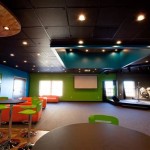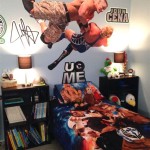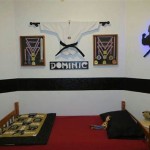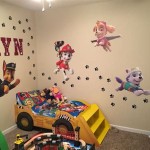Decorating A Long Room
Long rooms present a unique challenge in interior design, with their elongated proportions often creating a sense of imbalance. However, with the right approach, you can transform a narrow space into a visually appealing and welcoming environment. By understanding the principles of visual balance and using strategic design choices, you can create a harmonious and functional space that maximizes the room's potential.
Divide and Conquer: Using Architectural Elements
One effective strategy for decorating a long room is to break it down into distinct zones. This can be achieved through the strategic placement of architectural elements, such as furniture, rugs, and lighting fixtures. For example, a large sofa placed in the center of the room can visually divide the space, creating a cozy living area while leaving the remaining area for other purposes.
Another approach is to utilize built-in features, like bookshelves or a fireplace, to create natural divisions. Placing a rug under the seating area further defines the zone and anchors the furniture. By creating distinct areas within the long room, you can avoid the feeling of emptiness and enhance the overall sense of functionality.
Visual Balance: The Power of Symmetry and Asymmetry
Achieving visual balance is crucial in any interior design project, but it is particularly vital in a long room. Symmetrical arrangements, where elements are mirrored on both sides of a central point, create a sense of order and stability. This can be achieved by placing similar furniture pieces at equal distances from the center of the room or by using symmetrical lighting arrangements.
However, complete symmetry can sometimes feel too formal. Introducing elements of asymmetry can add visual interest and dynamism. This could involve placing a unique piece of furniture off-center or using a combination of different textures and patterns. The key is to balance the asymmetric elements with symmetrical ones to create a visually pleasing overall effect.
Color and Light: Creating Depth and Dimension
Color and lighting play a significant role in shaping the perception of space. In a long room, strategic use of color can help create the illusion of depth and width. Lighter shades, such as pastels and whites, tend to reflect light and make spaces feel larger. Using darker tones on the walls can accentuate the length of the room, while lighter tones on one or more walls can create the illusion of width.
Lighting can also be employed to enhance the desired visual effect. For instance, using multiple light sources, including overhead fixtures, table lamps, and floor lamps, can create a more layered and inviting atmosphere. Strategically placed spotlights can illuminate specific areas, highlighting artwork or furniture while minimizing the perception of length.
In addition to color and lighting, the use of mirrors can also help create the illusion of space. Strategic placement of mirrors can reflect light, making the room appear larger and brighter. Mirrors placed on the shorter walls can also create the illusion of added width. However, avoid using mirrors on the longer walls as they can further accentuate the length of the room.
Texture and Pattern: Adding Visual Interest
Texture and pattern can add depth and visual interest to a long room. Utilizing a variety of textures, such as smooth fabrics, rough wood, and textured walls, can create a dynamic and engaging space. Combining different patterns, such as stripes, florals, and geometric designs, can also add visual interest, but it's important to choose patterns that complement each other and create a cohesive look.
When incorporating textures and patterns, consider the overall theme and style of the room. A bold pattern can be a focal point, while subtle textures can add depth and sophistication. Always ensure that the chosen textures and patterns complement the overall color scheme and create a visually appealing and balanced environment.
The Importance of Furniture Placement
Furniture placement is crucial for creating a functional and visually appealing layout in a long room. Consider the flow of traffic and create a sense of openness by avoiding overcrowding. Utilize versatile furniture pieces, such as a sectional sofa or a modular bookshelf, to maximize flexibility and create distinct zones within the space.
Place furniture strategically to create visual balance and avoid accentuating the room's length. Consider using furniture in varying heights to add visual interest and break up the long lines. For example, a tall bookcase can serve as a visual anchor on the long wall, while a low coffee table can create a more intimate seating area.

How To Decorate A Long Narrow Living Room So Much Better With Age
:max_bytes(150000):strip_icc()/decorate-long-narrow-living-room-2213445-04-96b1f74b88d343cba835f6e13fbd50df.jpg?strip=all)
Ideas For Decorating A Long And Narrow Living Room

How To Arrange Furniture In A Long Narrow Living Room Solutions For Tricky Spaces

10 Tips For Styling Large Living Rooms Other Awkward Spaces The Inspired Room

How To Maximize The Potential In A Long Narrow Living Room Patticake Wagner Style

How To Furnish Narrow And Long Open Plan Living Dining Rooms

10 Tips For Styling Large Living Rooms Other Awkward Spaces The Inspired Room

How To Decorate A Long Narrow Living Room So Much Better With Age

10 Tips For Styling Large Living Rooms Other Awkward Spaces The Inspired Room

How To Decorate A Large Living Room Ruggable Blog







